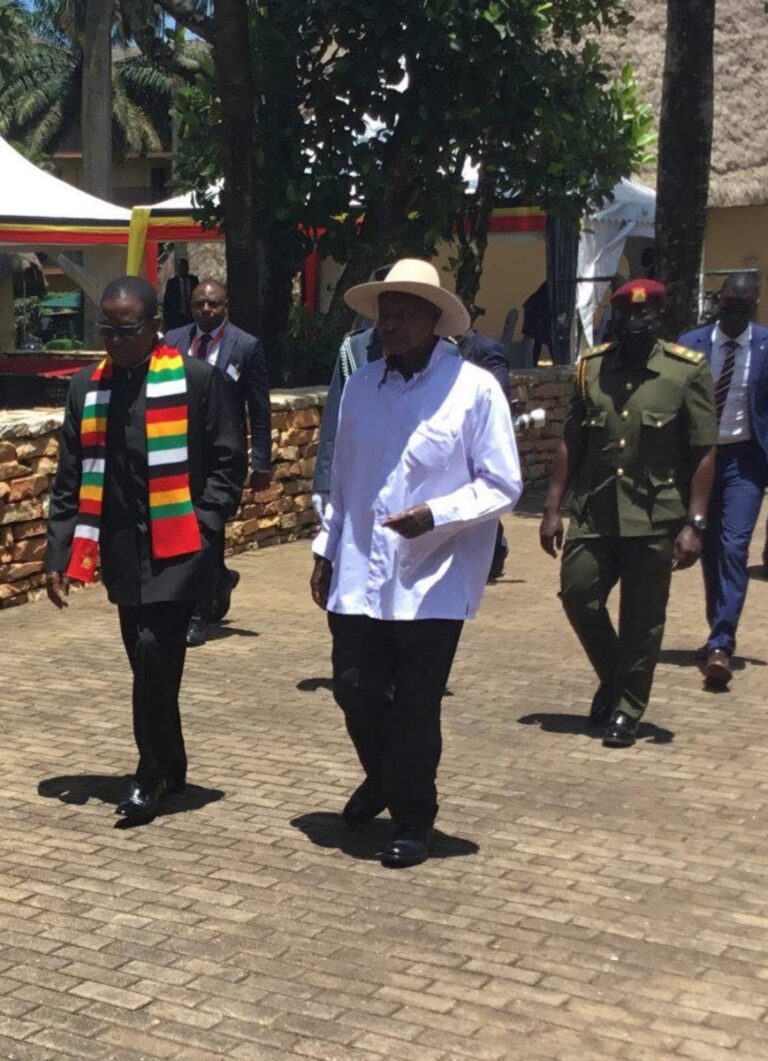Mnangagwa and Museveni: A Visual Commentary on Leadership and Image
In a recent high-level summit held in Kampala, a striking visual representation of leadership emerged as Presidents Emmerson Mnangagwa of Zimbabwe and Yoweri Museveni of Uganda appeared both unsettlingly disheveled and out of place. Instead of the dignified attire typically expected from heads of state, both leaders sported conspicuously oversized clothing that caught the eye for all the wrong reasons.
Fashion Faux Pas: Oversized Attire on Display
President Museveni was clad in a billowing white shirt that resembled a tent, while Mnangagwa’s ensemble featured a tired black suit that looked a couple of sizes too large, topped off with a vibrant, rainbow-hued scarf that seemed more appropriate for harsh winters than the warm 26°C conditions of Uganda. Such clothing choices raise critical questions about the image these leaders project on the international stage.
The Symbolism of Presidential Attire
Fashion serves as a powerful tool of communication, especially for leaders. In presidential settings, attire can convey authority, dignity, and the state of governance. However, both leaders’ choices have had an opposite effect, sending signals of confusion, disconnection, and a surprising disinterest in their public personas. This misalignment between image and expectation may translate into perceptions of their competence and governance.
Museveni: The Loose Attire of a Ruler Past His Prime
Museveni’s ensemble, particularly his unstructured shirt that seemed to collapse around him, presents an image of a leader who may be out of touch with reality. It raises concerns about a ruler who, too comfortable in his power, neglects how appearances can reflect authority. His signature hat and casual approach suggest a confidence that might be unwarranted, creating an impression of a ruler unaware or unwilling to confront the challenges of his regime.
Mnangagwa: An Ill-Fitting Representation of Zimbabwe
President Mnangagwa’s appearance, by stark contrast, suggests urgency. He looked as if he had been hastily dressed in a mismatched outfit from a dusty wardrobe. The uncomfortable fit of his winter attire in Uganda’s climate sent a message that resonated with viewers—not only was there a lack of comfort, but there was also a deep-seated anxiety about his leadership. The awkwardly draped scarf appeared to hang limply, failing to assert any sense of national pride or confidence.
The Broader Implications of Attire on Leadership
The attire worn by both leaders goes beyond mere fashion blunders. Clothing can be a form of soft propaganda, echoing the carefully curated images of past icons like Kwame Nkrumah and Thomas Sankara. In stark contrast, this recent portrayal emphasizes a troubling narrative: both leaders, who once represented liberation and hope, now appear as figures struggling to maintain relevance in a rapidly changing political landscape.
Conclusion: A Reflection of Governance in Crisis
As both Zimbabwe and Uganda grapple with profound economic and democratic challenges, the oversized clothing of their leaders signifies more than sartorial misjudgments. It reflects symbolic disorientation and a disconnect from the citizenry. The garments fit poorly not just physically but metaphorically, suggesting a leadership struggling to adapt to new realities. In this era where power and purpose are increasingly questioned, the public image of these leaders appears to be decaying, much like their once-potent political authority.
